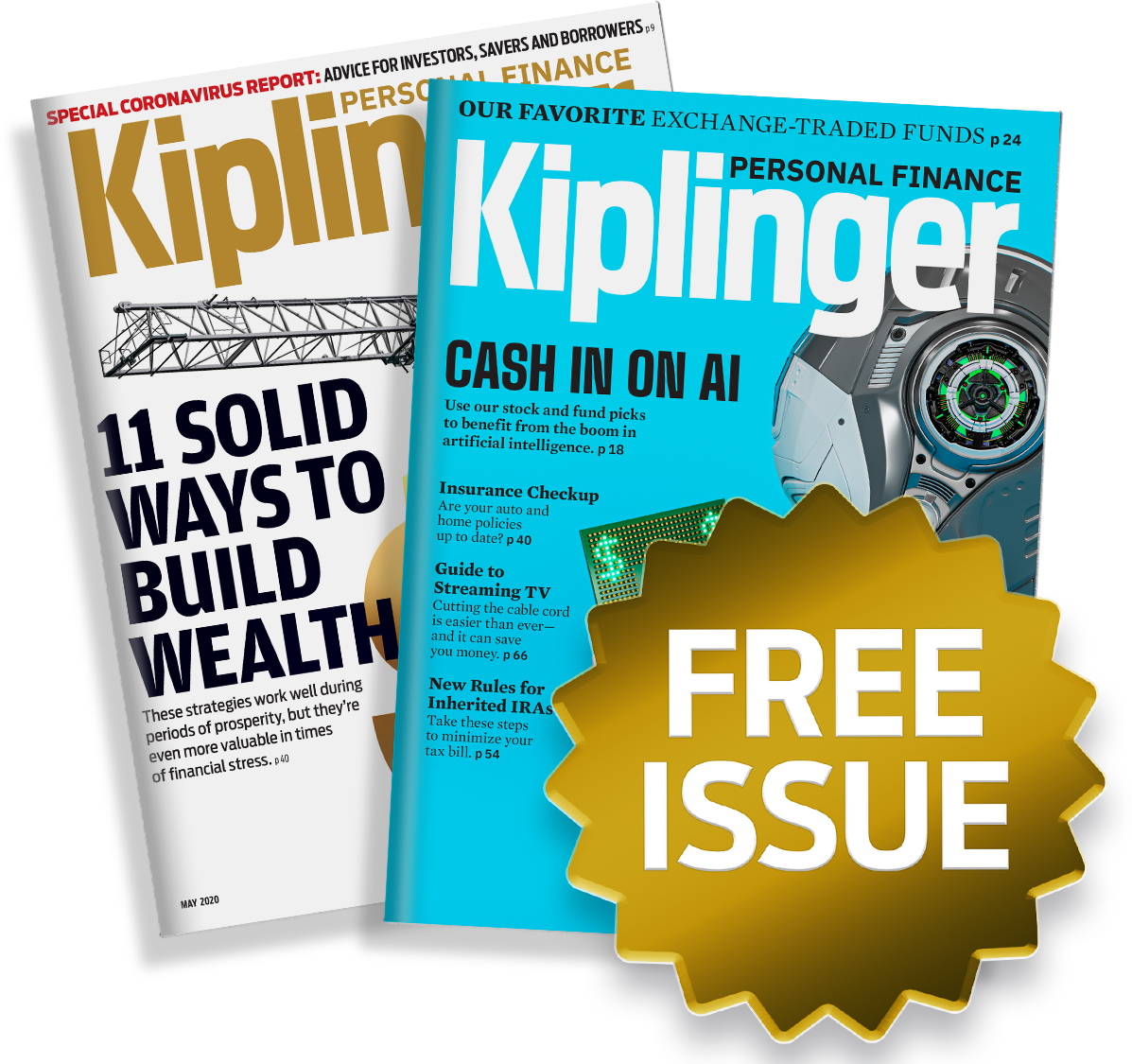Kiplinger Jobs Outlook: A Good September Report Hides Ongoing Weakness
Weak trends in hiring appear to be continuing, but all eyes will be on the October and November jobs reports, to be released together on December 16.

Kiplinger’s Economic Outlooks are written by the staff of our weekly Kiplinger Letter and are unavailable elsewhere. Click here for a free issue of The Kiplinger Letter or to subscribe for the latest trends and forecasts from our highly experienced Kiplinger Letter team.
A pickup of 119,000 jobs in September was the biggest gain in five months. While that quieted recession fears, the previous signs of a hiring slowdown are still present, and will likely continue. September’s gains were narrowly concentrated in health care, leisure and hospitality, and state and local government. Over half of industries are cutting jobs on net. The gains in construction and teaching in September are not likely to last, since these tend to be volatile. The gain in leisure and hospitality benefited from a likely one-time seasonal adjustment to the official data. The unemployment rate has risen for three months in a row, and now stands at 4.4%. While that is still low when compared with historical levels, the rate is likely to continue moving upwards for a while, given the elevated number of corporations announcing layoffs through WARN notices (Worker Adjustment and Retraining) recently. When released on December 16, October data are likely to show a net job loss, given that 100,000 or so federal workers who took buyouts earlier in the year will be removed from the federal job rolls for the first time. The most instructive labor market picture is likely to be reflected in the November data, which will be released at the same time.
The unemployment rate is likely to continue to edge up through the first half of next year, peaking at 4.7% before retreating to 4.5% by year-end 2026. Wage growth was reported in September to be 3.8% at an annual pace, and is expected to slow to 3.5% by the end of the year. Wage growth tends to lag other labor market indicators.
From just $107.88 $24.99 for Kiplinger Personal Finance
Be a smarter, better informed investor.

Sign up for Kiplinger’s Free Newsletters
Profit and prosper with the best of expert advice on investing, taxes, retirement, personal finance and more - straight to your e-mail.
Profit and prosper with the best of expert advice - straight to your e-mail.
Consumer and business uncertainty about the economy will continue to delay hiring plans and should slow future pay gains. Employers often defer hiring when consumers are concerned about losing their jobs, or when businesses don’t know whether there will be a positive return to investing in additional workers. Prior to the tariffs, we expected monthly job growth of about 150,000 new positions to continue. Now, job growth could disappear almost entirely, if enough employers decide to hold off on hiring while they sort out the effects of the new tariffs on both their businesses and the economy as a whole.
The payroll employment release is important to the Federal Reserve for two reasons: First, one of the Fed’s two mandates is to support employment. Second, employment is a more reliable indicator of recession than the initial GDP estimates. The Fed needs accurate employment numbers to tell it when to either step on the gas or hit the brakes by cutting or raising interest rates. While the strong September employment report may keep the Fed on hold for now, the likely reappearance of weakness in the labor market should lead to several Fed rate cuts next year.
Related Content
Profit and prosper with the best of Kiplinger's advice on investing, taxes, retirement, personal finance and much more. Delivered daily. Enter your email in the box and click Sign Me Up.

David is both staff economist and reporter for The Kiplinger Letter, overseeing Kiplinger forecasts for the U.S. and world economies. Previously, he was senior principal economist in the Center for Forecasting and Modeling at IHS/GlobalInsight, and an economist in the Chief Economist's Office of the U.S. Department of Commerce. David has co-written weekly reports on economic conditions since 1992, and has forecasted GDP and its components since 1995, beating the Blue Chip Indicators forecasts two-thirds of the time. David is a Certified Business Economist as recognized by the National Association for Business Economics. He has two master's degrees and is ABD in economics from the University of North Carolina at Chapel Hill.
-
 Moves to Manage the Soaring Costs of Owning a Car
Moves to Manage the Soaring Costs of Owning a CarIt's costing more and more to keep a car on the road, but you can drive some costs down. Here's how to get a better deal on insurance premiums, repairs and gas
-
 Here's What You'd Have If You Invested $1,000 Into Coca-Cola Stock 20 Years Ago
Here's What You'd Have If You Invested $1,000 Into Coca-Cola Stock 20 Years AgoEven with its reliable dividend growth and generous stock buybacks, Coca-Cola has underperformed the broad market over the long term.
-
 Moves to Manage the Soaring Costs of Owning a Car
Moves to Manage the Soaring Costs of Owning a CarIt's costing more and more to keep a car on the road, but you can drive some costs down. Here's how to get a better deal on insurance premiums, repairs and gas
-
 If You'd Put $1,000 Into Coca-Cola Stock 20 Years Ago, Here's What You'd Have Today
If You'd Put $1,000 Into Coca-Cola Stock 20 Years Ago, Here's What You'd Have TodayEven with its reliable dividend growth and generous stock buybacks, Coca-Cola has underperformed the broad market over the long term.
-
 A JPMorgan Fund Holds Its Own Thanks to a Focus on Quality
A JPMorgan Fund Holds Its Own Thanks to a Focus on QualityDespite its defensive characteristics, the JPMorgan U.S. Quality Factor holds up in good times and in bad.
-
 What Fed Rate Cuts Mean For Fixed-Income Investors
What Fed Rate Cuts Mean For Fixed-Income InvestorsThe Fed's rate-cutting campaign has the fixed-income market set for an encore of Q4 2024.
-
 My First $1 Million: Oil Industry Engineering Manager, 67, Chapel Hill, N.C.
My First $1 Million: Oil Industry Engineering Manager, 67, Chapel Hill, N.C.Ever wonder how someone who's made a million dollars or more did it? Kiplinger's My First $1 Million series uncovers the answers.
-
 I'm a Financial Literacy Expert: Bubble-Wrapping Our Kids Robbed Them of Resilience. Now What?
I'm a Financial Literacy Expert: Bubble-Wrapping Our Kids Robbed Them of Resilience. Now What?By raising them to think they're amazing no matter what and lifting them over obstacles, we left them unprepared to work in the real world.
-
 I'm a Financial Planner: If You're a High Earner, You Need an 18-Month Safety Net
I'm a Financial Planner: If You're a High Earner, You Need an 18-Month Safety NetNo job seems to be safe in this age of AI. If you make a larger-than-usual salary, then you need to have a larger-than-usual emergency fund. Here's why.
-
 If You Put $1,000 into Qualcomm Stock 20 Years Ago, Here's What You Would Have Today
If You Put $1,000 into Qualcomm Stock 20 Years Ago, Here's What You Would Have TodayQualcomm stock has been a big disappointment for truly long-term investors.